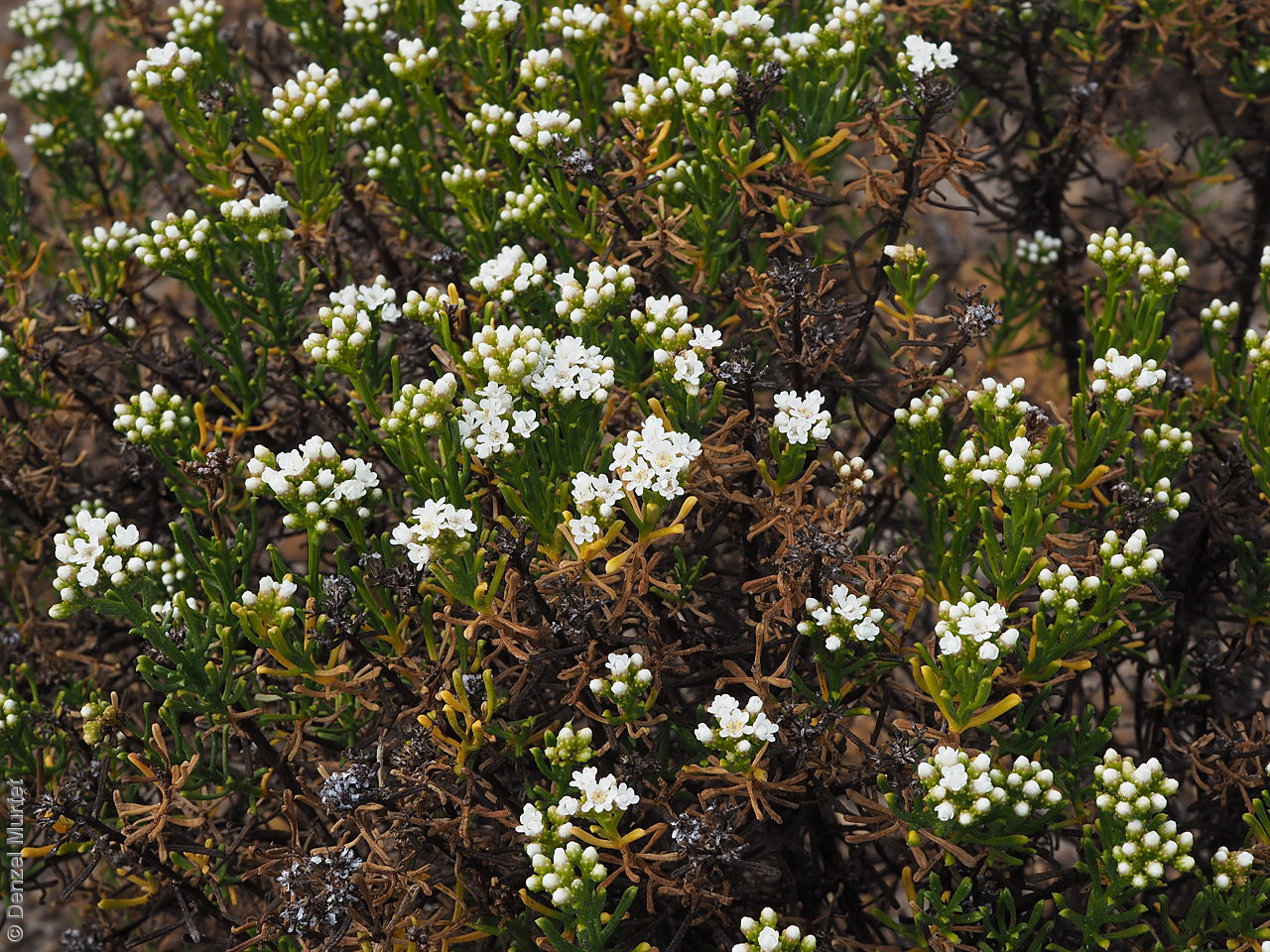

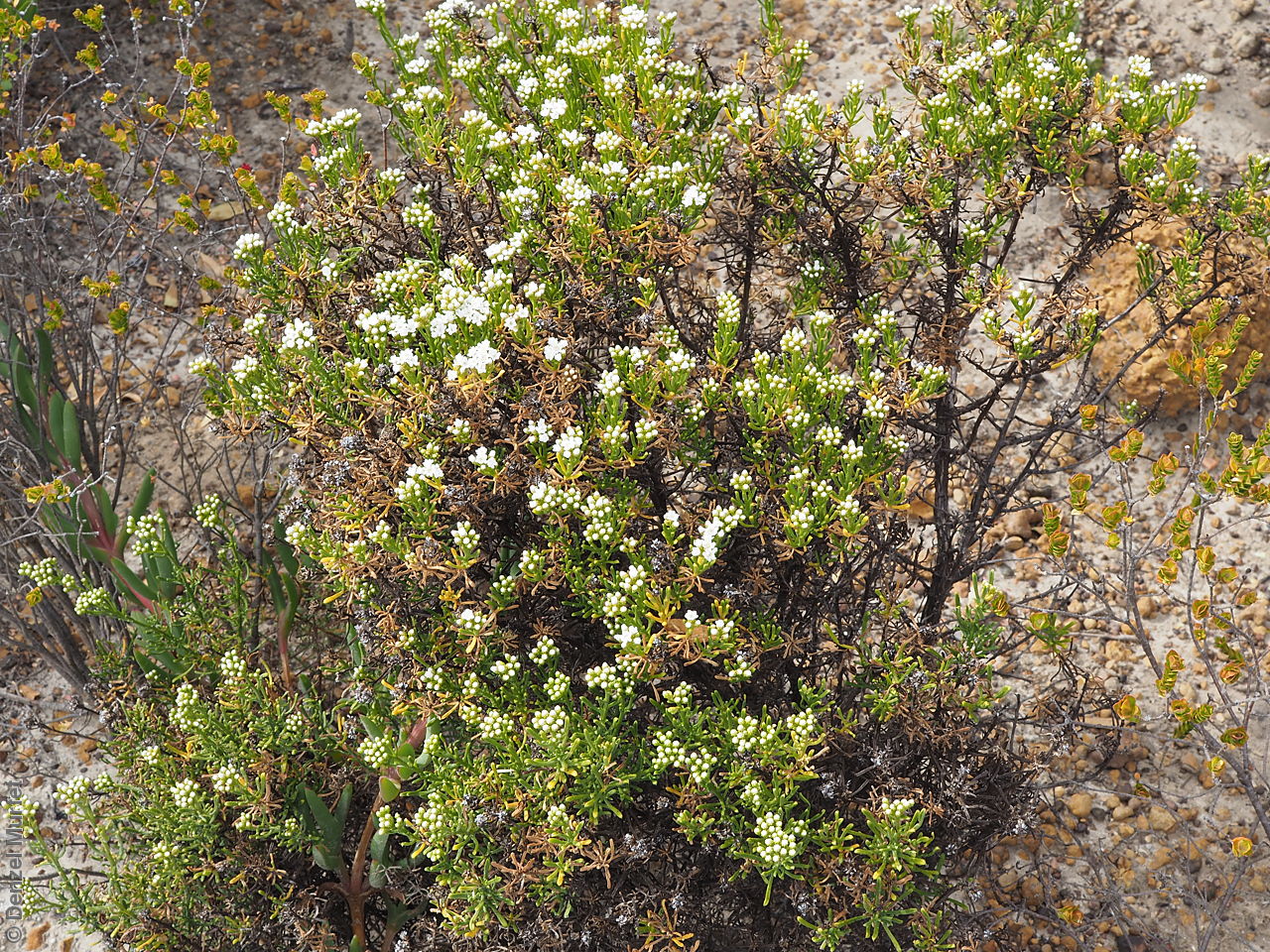
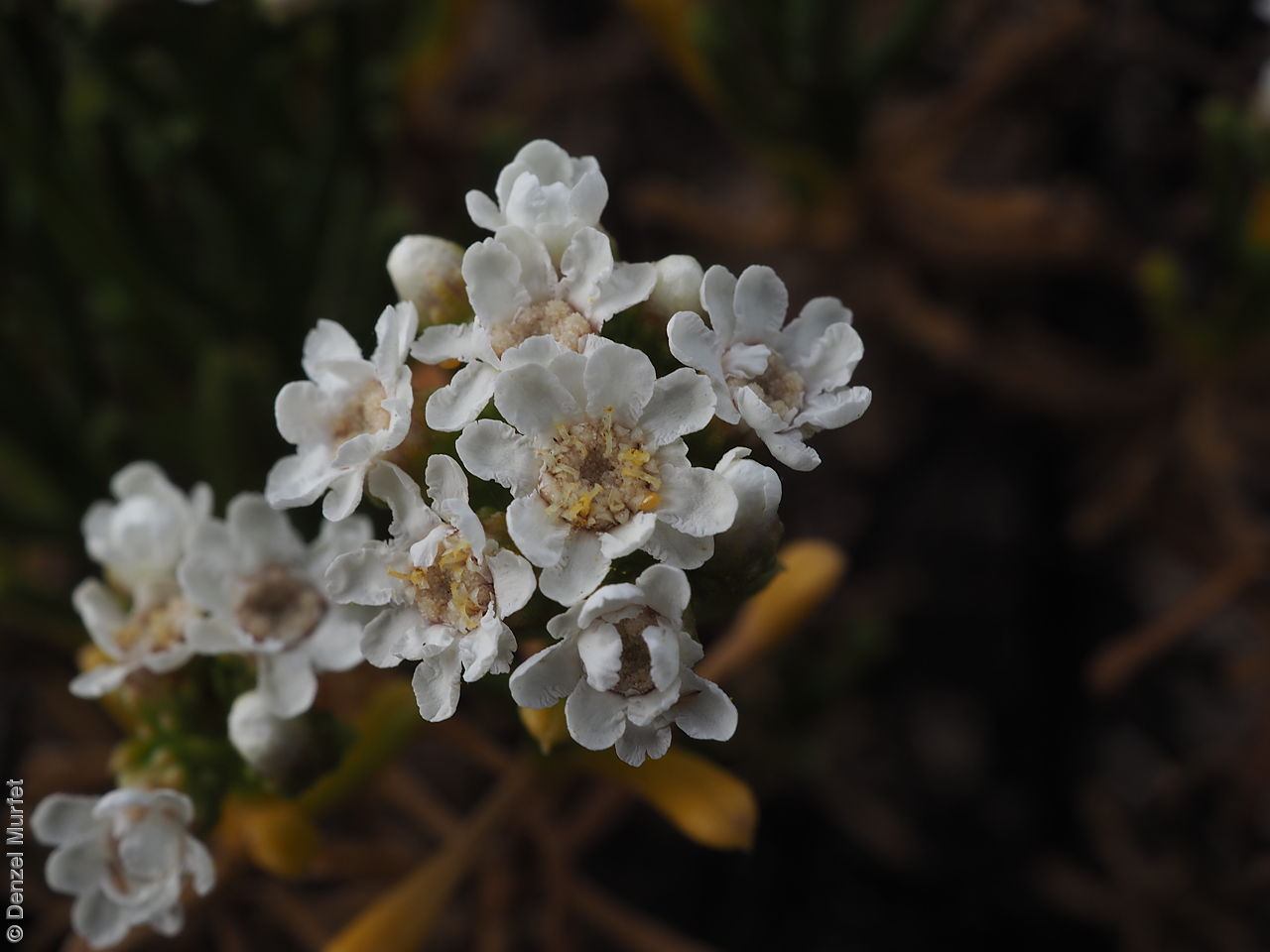
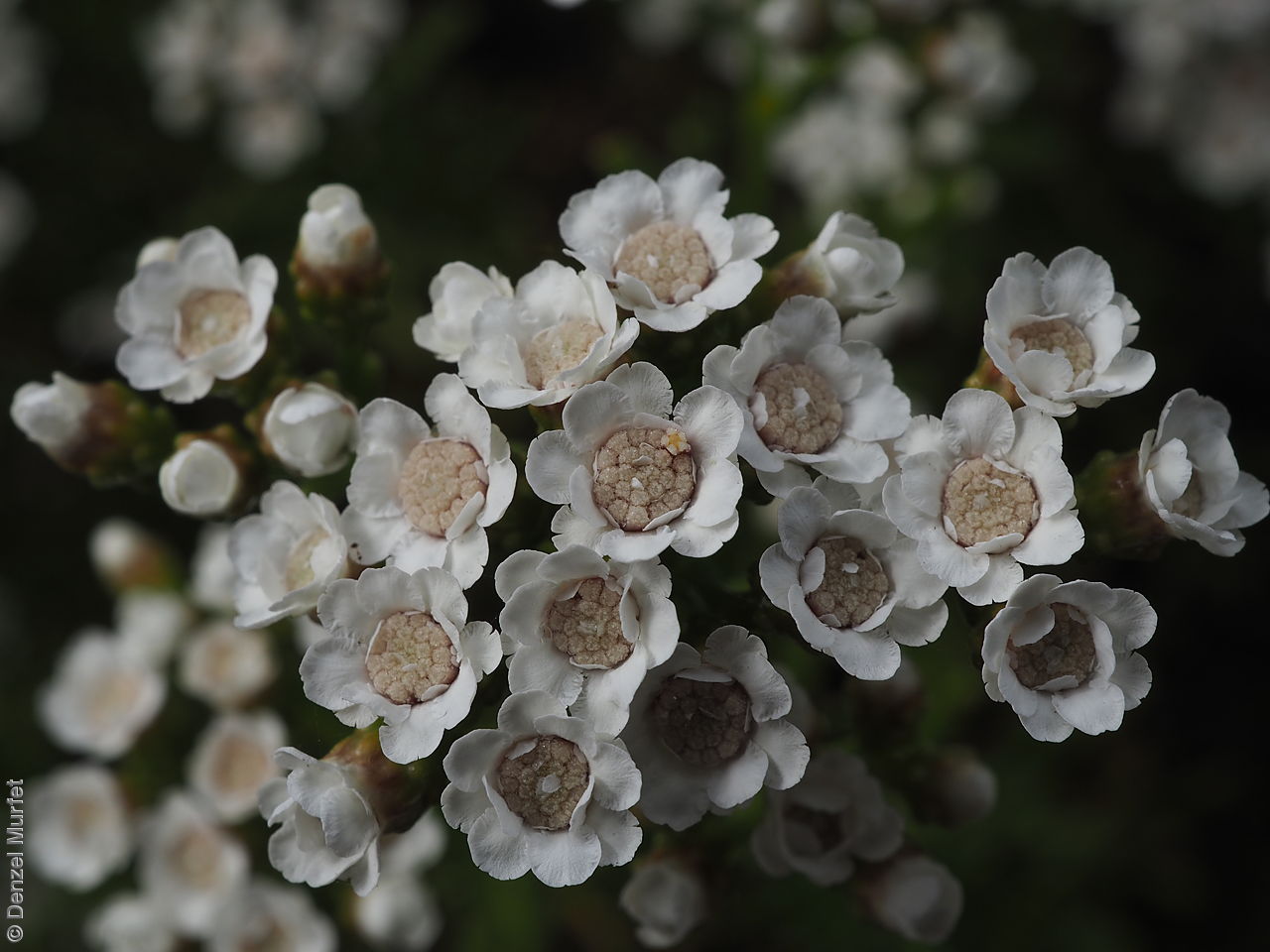
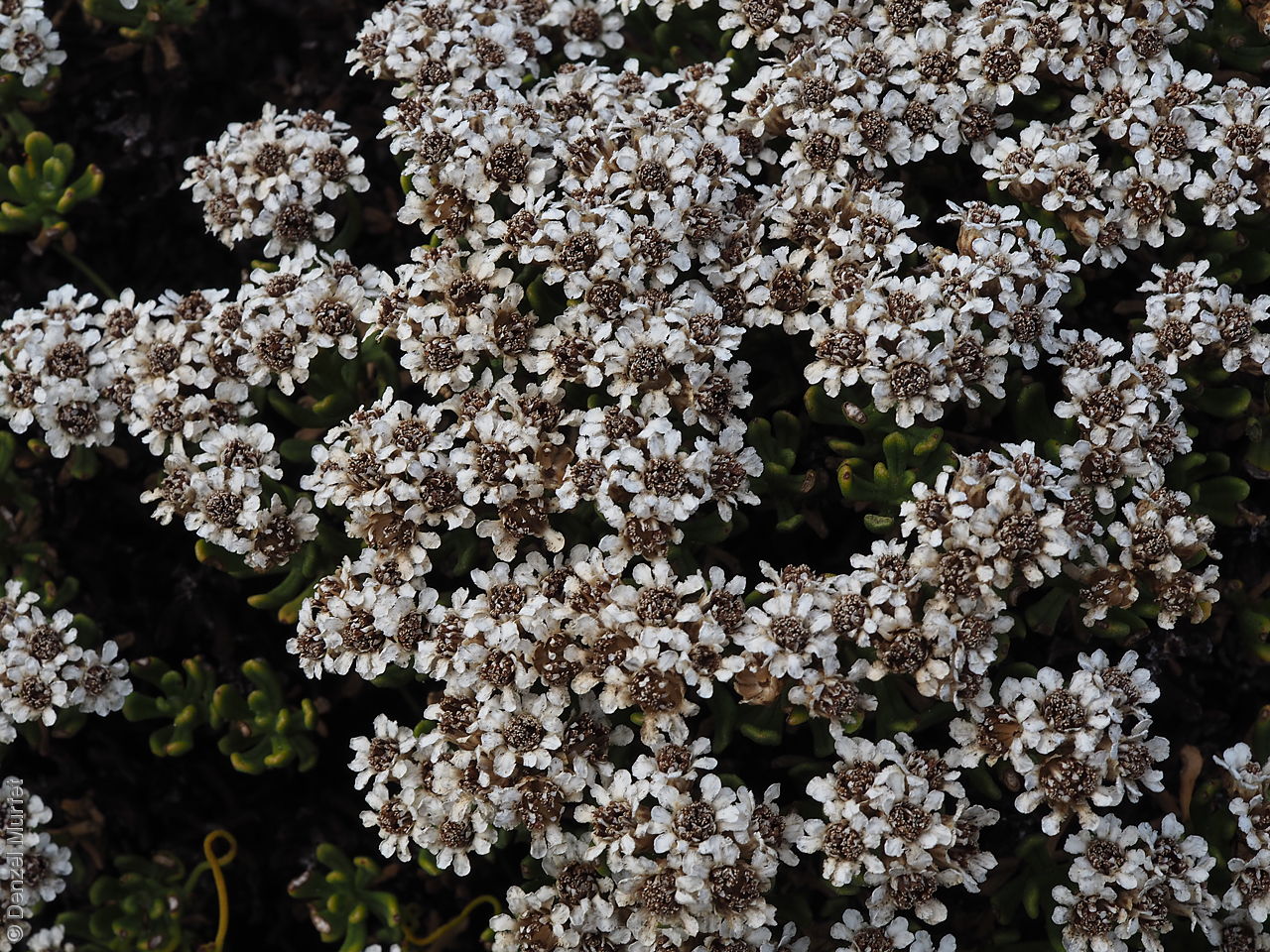
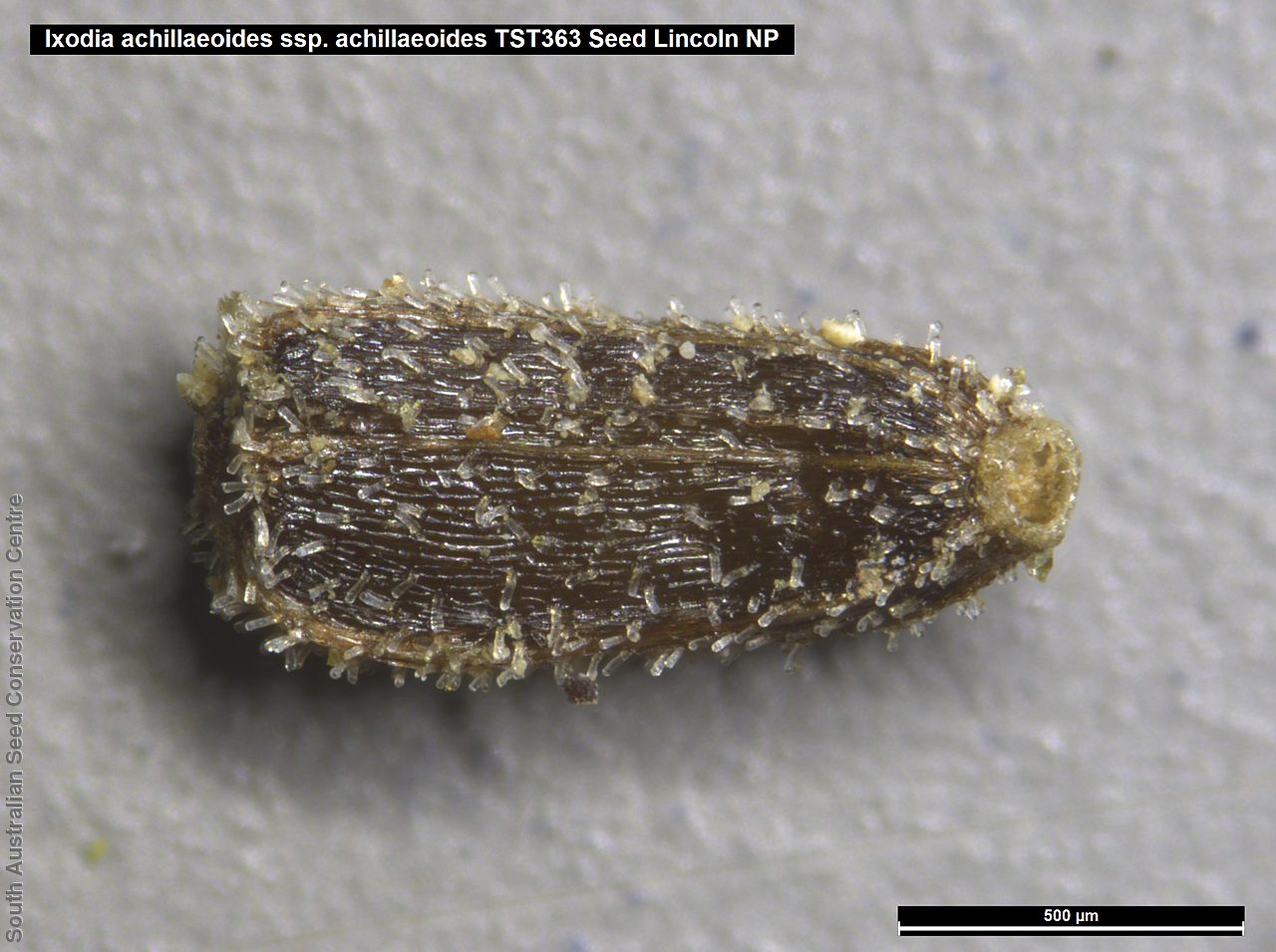
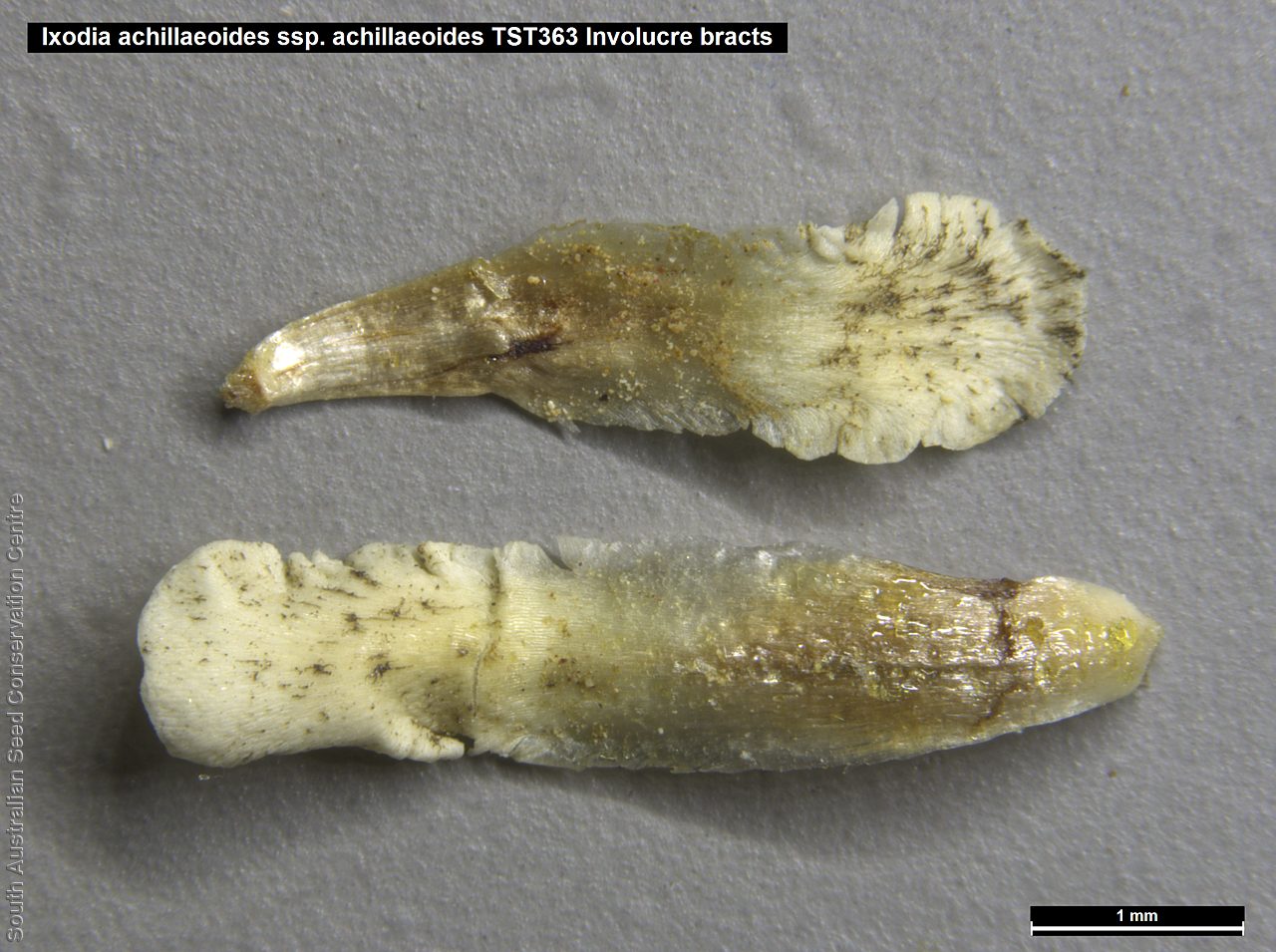
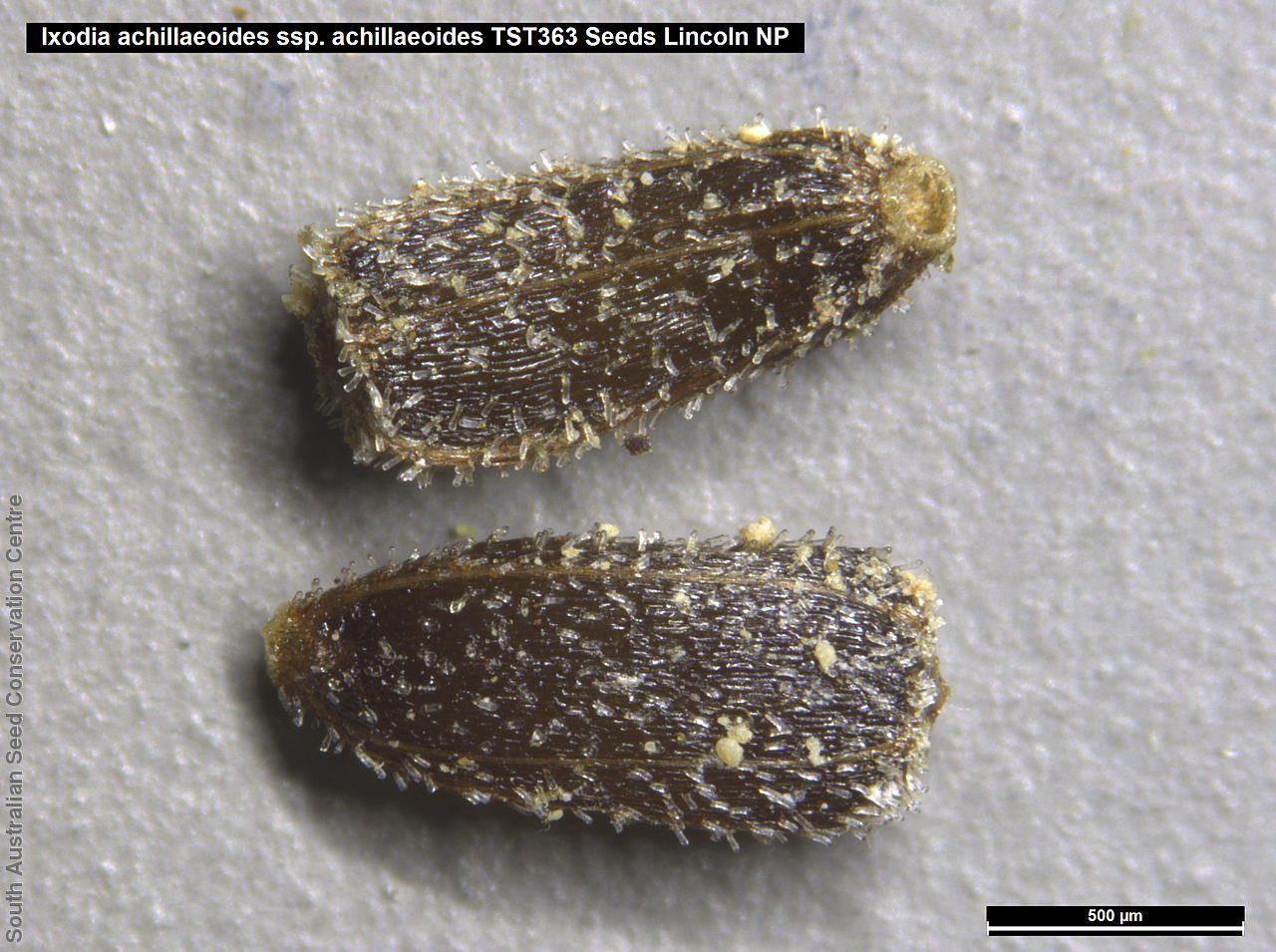

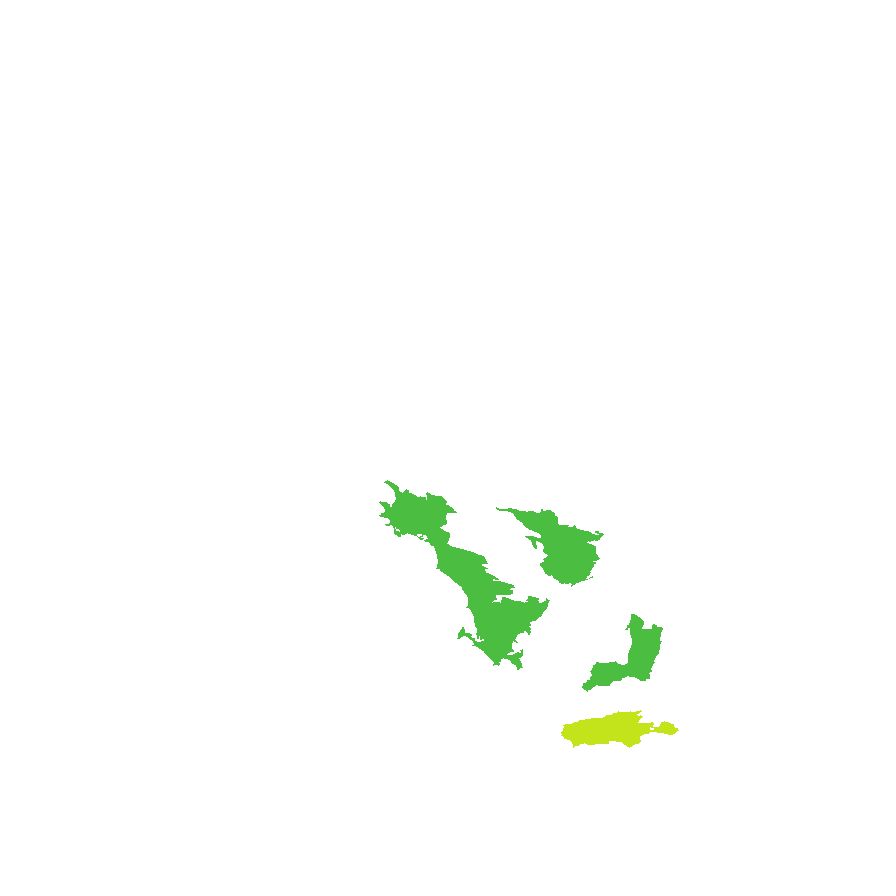
Botanical art
Etymology
Ixodia, from the Greek 'ixodes', meaning sticky (from the Greek 'ixos' meaning birdlime), referring to the plant being sticky. Achillaeoides means resembling the genus Achillea (named after the Greek warrior Achilleios, who reputedly used plants from the genus to patch-up wounds).
Distribution and status
Endemic to South Australia and found at the S tip of the Eyre and Yorke Peninsulas and Kangaroo Island, growing on coastal cliffs and exposed coastal sand dunes. Native. Common in South Australia.
Herbarium regions: Eyre Peninsula, Yorke Peninsula, Kangaroo Island
NRM regions: Eyre Peninsula, Kangaroo Island
AVH map: SA distribution map (external link)
Plant description
Compact shrub or undershrub to 80 cm high, with stems ribbed and viscid. Leaves oblanceolate, to 35 mm long and 5 mm wide; leathery to succulent. Flowers through the year. This subspecies differs from the other two subspecies by having oblanceolate leaves (obovate for I. achillaeoides ssp. arenicola and linear to lanceolate for I. achillaeoides ssp. alata) and found on coastal cliffs and exposed coastal sand dunes on the bottom of the Eyre and Yorke Peninsulas and Kangaroo Island (coastal in the lower South-east for I. achillaeoides ssp. arenicola and mainly away from the coast for I. achillaeoides ssp. alata). Fruits are white to Greyish brown papery head. Seed embryo type is spathulate.
Seed collection and propagation
Collect seeds between January and December. Collect whole heads that are drying off and turning greyish-brown or collect just the seeds by plucking off. Mature seeds are easily removed. Place the heads in a tray for a week to dry. Then pluck the seeds from the head with your finders. Viable seeds will be fat and brown. Store the seeds with a desiccant such as dried silica beads or dry rice, in an air tight container in a cool and dry place.